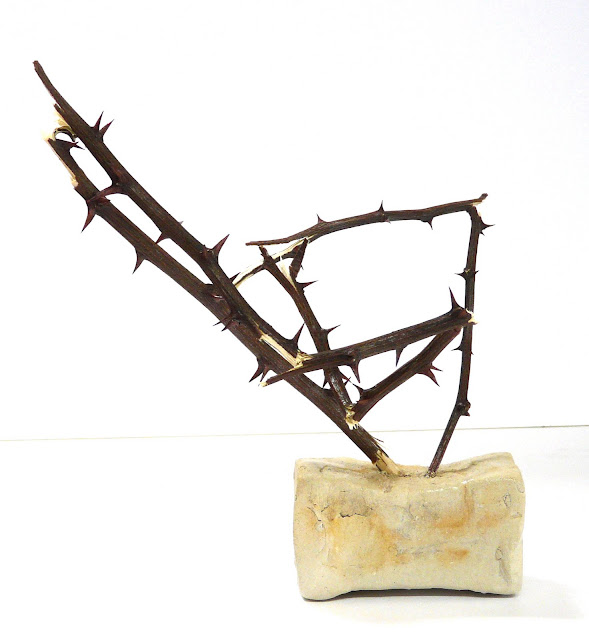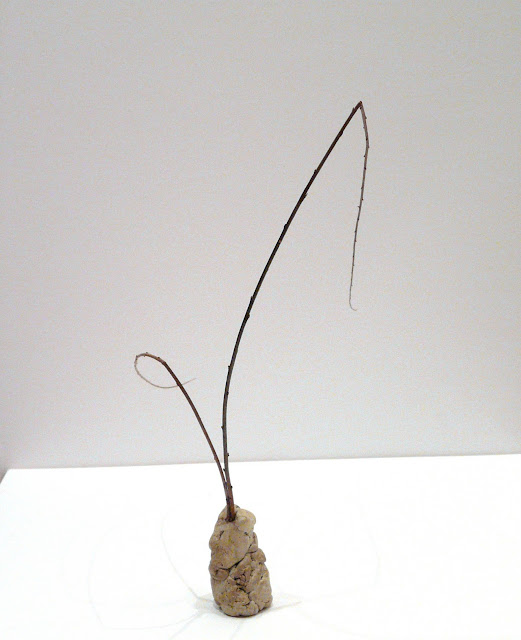It’s Hard to Be Young (Maturity vs. Creativity)
Daoism has exerted a profound influence over Far Eastern arts for over two thousand years. It's a way of thinking and living that can liberate mind and body. Daoism proposes the return to a state of original spontaneity by discarding the rules of rigid conventional behavior and thinking. It suggests that by learning to go with the flow and allowing our minds to function naturally, tremendous creative power can be unleashed. Tuning into the rhythm of Nature and understanding the interrelatedness of all things around us are key components of Daoist teachings. (from http://www.venuscomm.com/Penjingdef.html , retrieved May 28, 2011).
Kids are pressured to grow up quickly, take on more responsibility, be little adults. Often times in doing so they lose their independent, creative way of seeing the world. Think of our school system – conformity is rewarded, yet seeing things differently gets you a poor grade, or worse. The purity with which a child sees life is priceless. Picasso said “it takes a very long time to become young” and “every child is an artist”; but our society does not encourage us to be young and creative. Maybe that is what Picasso was thinking when he said the first of these quotes.
This piece was inspired in part by an installation of Carl Andre's at the Portland Center for the Visual Arts in the 1970's, as well as from reading the above quote on Daoism and then reading “Paragraphs on Conceptual Art” by Sol Lewitt a day later.
A new work which developed out of the series Attitudes Become Form (see below) which delves deeper into how we interact with nature while also bringing into question what we value and why.
Untitled
Charred wood, nails, mirror
The piece of charred wood was collected from the remains of a bonfire at Hidden Forest Cave. The fire was presumably from the same time as a significant vandalism where an entire cliff face was painted with graffiti, including painting over 8000 year old petroglyphs (which leads to quite an interesting question of why our culture values an ancient rock chipping that we know almost nothing about over contemporary street art; if the graffiti was any good I might struggle with which side to support, but the graffiti was limited in scope and not very good quality!). The vandalism is in an amazingly beautiful sink hole / collapsed section of ancient lava tube that can be accessed by a short crawl through a tunnel from another section of tube collapse. You enter into an amazing cave opening / forest grotto that looks out on a number of old growth Ponderosa Pine trees and the "graffiti wall" behind. As an outdoor educator I am appalled by the vandalism. As an artist interested in installing art in remote locations to provoke thought about our interactions with nature I am intrigued by the graffiti work, and the public response to it.
The piece of charred wood was collected from the remains of a bonfire at Hidden Forest Cave. The fire was presumably from the same time as a significant vandalism where an entire cliff face was painted with graffiti, including painting over 8000 year old petroglyphs (which leads to quite an interesting question of why our culture values an ancient rock chipping that we know almost nothing about over contemporary street art; if the graffiti was any good I might struggle with which side to support, but the graffiti was limited in scope and not very good quality!). The vandalism is in an amazingly beautiful sink hole / collapsed section of ancient lava tube that can be accessed by a short crawl through a tunnel from another section of tube collapse. You enter into an amazing cave opening / forest grotto that looks out on a number of old growth Ponderosa Pine trees and the "graffiti wall" behind. As an outdoor educator I am appalled by the vandalism. As an artist interested in installing art in remote locations to provoke thought about our interactions with nature I am intrigued by the graffiti work, and the public response to it.
Introducing a new series and a totally new direction.
Attitudes Become Form; inspired, in part, by readings about Joel Shapiro, Andy Goldsworthy, and formalism, as well as East Asian aesthetics and attitudes.
Untitled
Elm branch, thorn, unfired clay
Untitled
Thorn branch and unfired clay
Untitled
Birch branch, birch bark and unfired clay
Untitled
Cut and broken bamboo, unfired clay
Untitled;
Birch branch and unfired clay
Untitled
Willow branches and unfired clay
Statement:
In an attempt to feel safe and secure in this big, scary world, Western culture has developed an almost adversarial attitude toward nature. We have to control it, dominate it, conquer it to feel safe. John Cage suggests that one cause of this attitude may be that for Europeans to venture from their continent they had to sail against the wind, resulting in the need to develop new technologies that allowed them to overcome nature. In the East, to venture from their continent was a downwind sail, and thus a different attitude prevails. Cage theorizes that it is for this reason that the Eastern philosophy toward nature is more one of respect and living in harmony with, rather than struggling against and conquering. We see this difference in attitudes toward nature manifested in landscape paintings where in the East the human element is tiny within a very large landscape; whereas in Western paintings the human element is often the largest object in the scene.
This series was inspired, in part, by the works of Joel Shapiro and Andy Goldsworthy, but it is more about going back to my roots (I grew up in Northern Idaho living very closely with the land) and my self-expression on the differing attitudes that prevail regarding nature. To live in harmony with nature, or to dominate nature for the financial benefit of society is really what is at the heart of this series. In an attempt to share these thoughts I have created simple, rough, yet elegant artforms, not unlike Chinese shui-mo hua or sumi-e painting and Japanese raku tea sets. These works are not meant to communicate a specific message; rather, I encourage the viewer to interpret each for themselves. That is why each work has been left untitled, as I do not want to influence the viewer with any bias I may have as the artist.
























